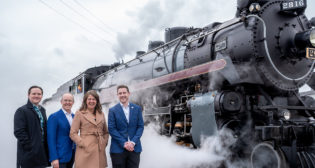
Transit Briefs: SBCTA, SCVTA, Sound Transit, VIA Rail
Written by Marybeth Luczak, Executive Editor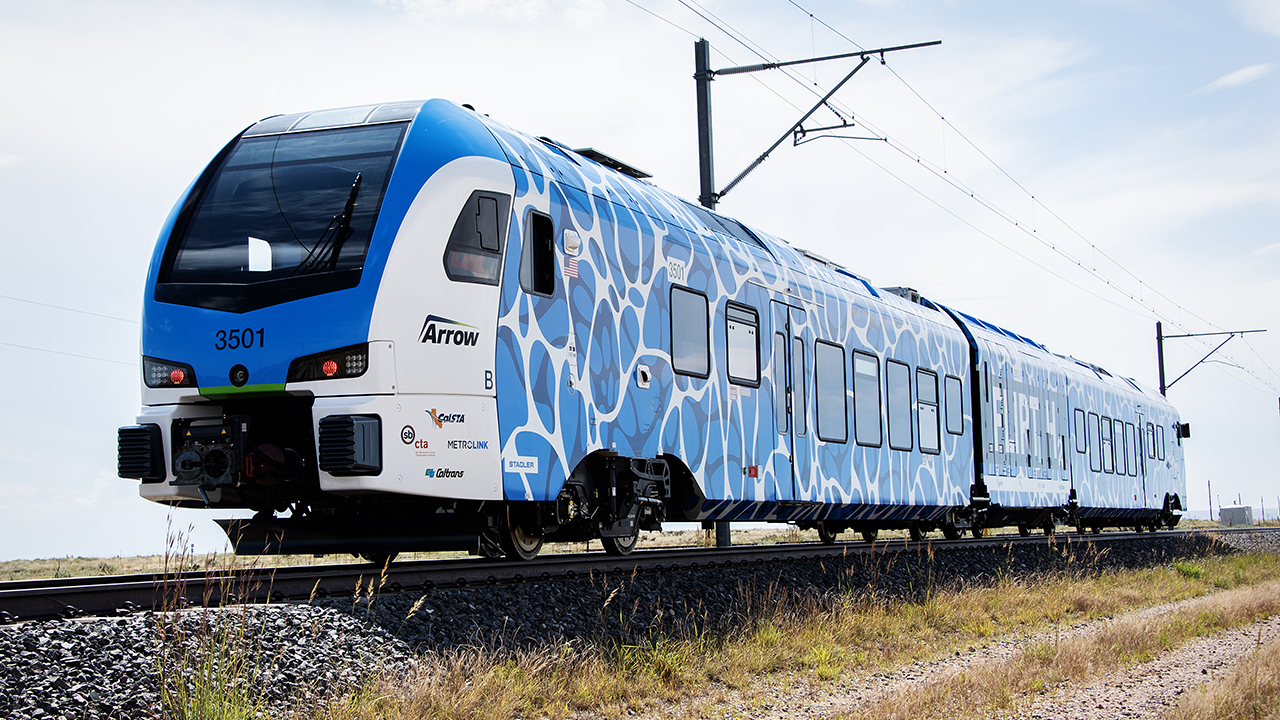
SBCTA’s first ZEMU train (pictured) arrived in the U.S. in September and is being tested at the DOT Transportation Technology Center in Pueblo, Colo. (ENSCO Photograph). The agency recently awarded a contract for a hydrogen storage and transfer system that will be used to fuel the ZEMU. (ENSCO Photograph)
San Bernardino County Transportation Authority (SBCTA) advances its hydrogen infrastructure project ahead of ZEMU (Zero-Emission Multiple Unit) train service in California. Also, Santa Clara Valley Transportation Authority (SCVTA) lands a $2.98 million grant for the Tidal Marsh Restoration Project; Seattle’s Sound Transit launches an online open house for an access improvements project at Sounder commuter rail’s South Tacoma Station; and Saskatchewan mayors consider a new route for VIA Rail Canada’s Canadian intercity passenger rail service.
SBCTA
SBCTA on Dec. 11 reported that its Board of Directors has approved a contract with Air Liquide Hydrogen Energy U.S., LLC (H2E) for the Arrow Maintenance Facility Hydrogen Fuel Upgrade Project. H2E will design, construct and install the infrastructure that will provide hydrogen storage and a transfer system that will fuel the ZEMU train at the Arrow Maintenance Facility, which is located east of SBCTA’s offices at the Santa Fe Depot.
SBCTA ordered the two-car hydrogen-powered ZEMU from Stadler in 2019, with an option for four more; it was built in Switzerland and showcased at InnoTrans 2022. The trainset arrived in the U.S. in September and was on display at APTA EXPO 2023 in October (see social media post below). ZEMU is slated to enter service in 2024 on the nine-mile, five-station San Bernardino Transit Center-University of Redlands (Arrow) line, which began operations last October. The ZEMU will run alongside the current low-emission Stadler FLIRT DMUs.
According to Stadler, the ZEMU has undergone “extensive testing” in both Switzerland and the United States. (For more on testing, read “First U.S. Hydrogen Powered Passenger Trainset Testing at TTC,” by Boris Nejikovsky, Special Advisor, and Matt DeGeorge, Senior Railway Research Engineer at ENSCO, Inc.; and Lucy Andre, Chief of Staff at Stadler US Inc.)
SCVTA
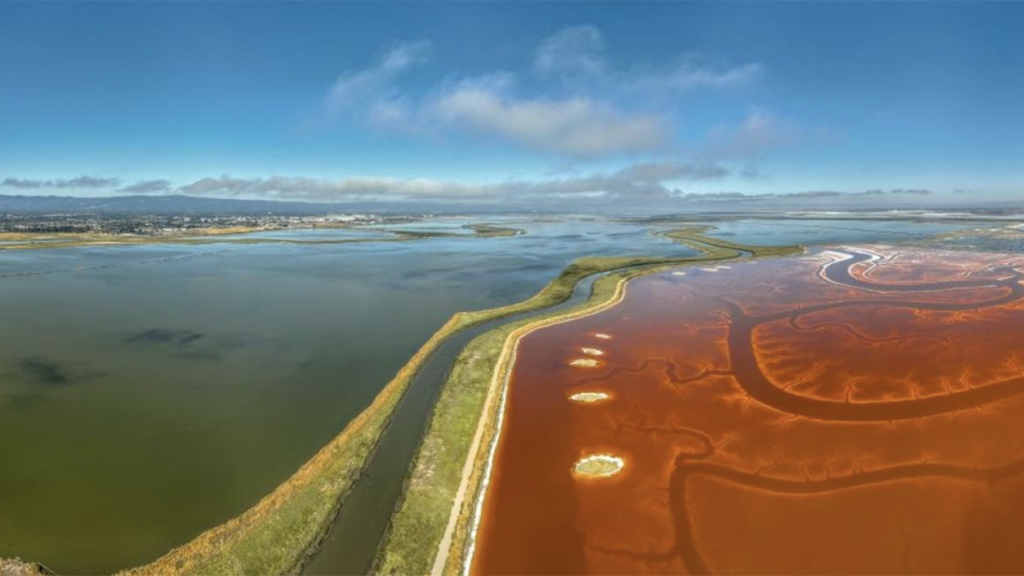
SCVTA on Dec. 11 reported receiving a $2,982,471 grant from the State of California Wildlife Conservation Board for the beneficial reuse of excavated material in the Tidal Marsh Restoration Project.
According to the agency, the project includes the transportation and depositing of excavated material primarily from its BART Silicon Valley Extension Phase II Project (BSVII) to the South San Francisco Bay former salt production ponds. “The excavated material will be placed in select ponds within the Don Edwards San Francisco Bay National Wildlife Refuge for the purpose of raising the subsided ponds bottoms to accelerate the timeline for ultimate tidal marsh restoration,” SCVTA said. “Combined, the beneficial reuse and tidal marsh restoration projects will bring numerous local environmental benefits including: sea level rise resilience; greenhouse gas emissions reductions; habitat creation for threatened and endangered species; water quality improvements; flood risk management; and construction waste reuse.”
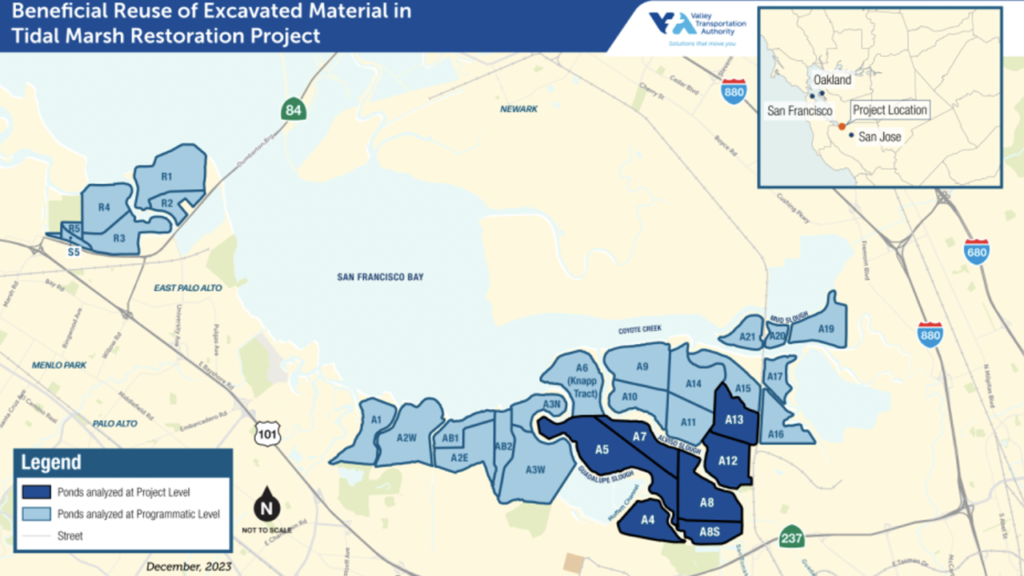
The grant award, SCVTA reported, is for the design phase of the project, identifying methodologies for transport and placement of the material into the ponds. The project is a collaborative effort among SCVTA, U.S. Fish and Wildlife Service, and Valley Water. It was previously awarded a $1.5 million grant from the California State Coastal Conservatory for the environmental and permitting phases.
According to SCVTA, an estimated 3 million-plus cubic yards of material will be excavated from the tunnel boring for the BSVII project. The agency said its primary choice for reuse of the excavated materials is for restoring the salt ponds vs. disposing of the soils in landfills.
The six-mile BSVII project—which includes three underground stations (28th Street/Little Portugal, Downtown San José, and Diridon), one at-grade station (Santa Clara), a maintenance facility, and five miles of subway tunnel—will expand San Francisco Bay Area Rapid Transit District (BART) service from the Berryessa Transit Center in northeast San José through downtown San José into the city of Santa Clara (see map below). SCVTA is the funding agency and will manage the delivery of the project, while BART is system operator and maintainer. (The 10-mile BART Phase I Berryessa Extension Project opened in 2020; it begins south of BART’s Warm Springs Station in Fremont, proceeds through Milpitas, and ends in the Berryessa area of north San José.)
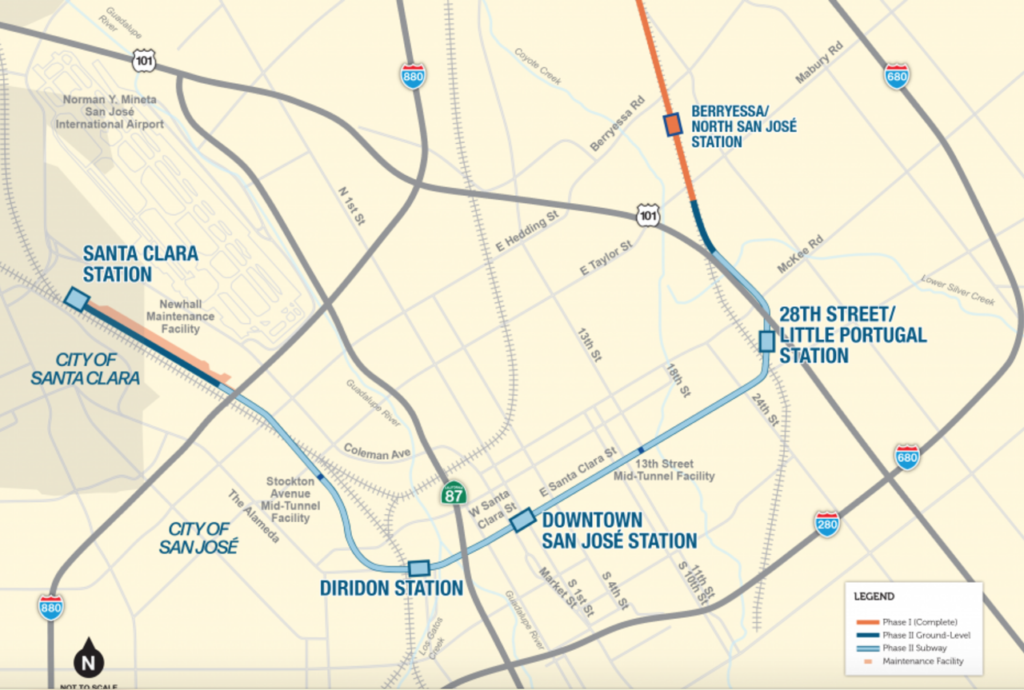
According to SCVTA, the four future stations will serve approximately 54,600 average weekday riders by 2040, with a projected 27,900 daily ridership at the Downtown San José Station alone.
Sound Transit
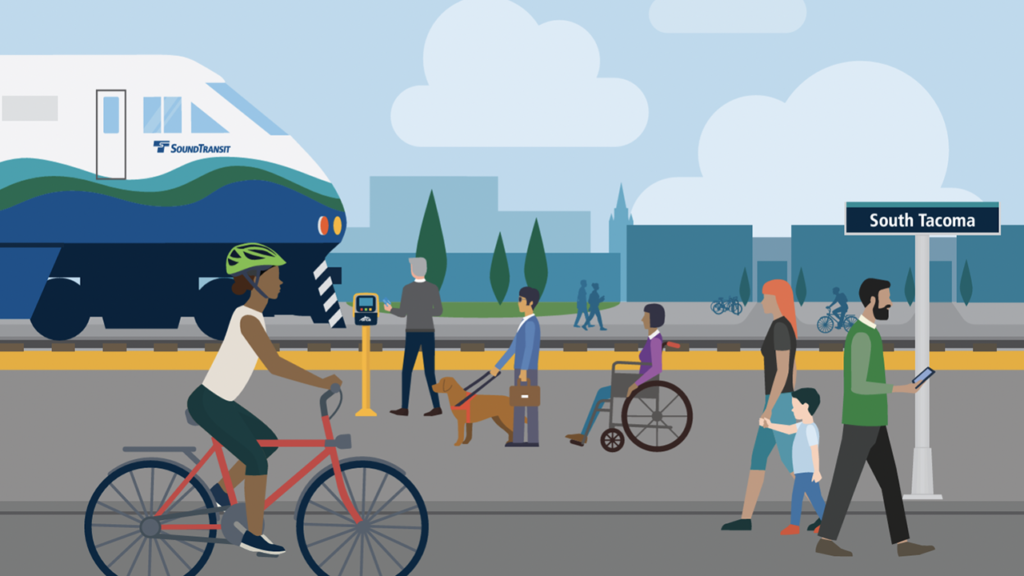
Sound Transit is asking the public to help prioritize access improvements at Sounder’s South Tacoma Station. An online open house is now available for the public to learn more about planned improvements around the station that are slated to increase accessibility to and from trains and around the area. Among the project’s proposals:
- Improved connections on South Adams Street to South Tacoma Station and Metro Parks Tacoma’s SERA campus.
- Protected bike lanes on South Pine Street from Center Street to South 47th Street.
- Upgraded infrastructure around South Tacoma Station.
Sound Transit’s Sounder S Line provides service between Pierce County (South Tacoma Station) and Seattle (King Street Station).
In 2024, the Sound Transit Board is expected to select the improvements to be included. From there, Sound Transit and the City of Tacoma will confirm agreements for construction.
“We anticipate the City will construct most of the improvements in the City’s right-of-way with Sound Transit constructing certain elements, such as the station accessibility and safety improvements at the South Tacoma Station,” Sound Transit reported. “All improvements are set to be completed by 2030.”
VIA Rail Canada
The City of Lloydminster, AB/SK, on Dec. 12 reported that the Saskatchewan mayors of Lloydminster, North Battleford, Warman and Yorkton presented a proposal (above) to the City of Saskatoon that they said would “improve VIA Rail’s passenger service across the province.”
The proposal involves re-routing VIA Rail’s Canadian service to the CN Prairie North Line, connecting Yorkton, Canora, Humboldt, Warman, the Saskatoon region, the Battlefords, and Lloydminster to Canada by intercity passenger rail. Once in Alberta, the towns of Vermilion and Vegreville would be included as stops before the Canadian returned to Edmonton, a current VIA Rail stop on the CN main line.
“Moving VIA Rail to the Prairie North Line within the Saskatoon North Partnership for Growth P4G, will connect more Indigenous and rural communities while providing greater access to potential passengers,” the City of Lloydminster reported. “The proposed change will also help improve VIA Rail’s on-time performance, which is measured as arriving within 60 minutes of the scheduled arrival. On-time performance results of the Canadian show the passenger rail company dropped from 84% in 2009 to 8% in 2017.”
“The opportunity to help grow Indigenous and Non-Indigenous tourism businesses is key to helping grow our economy for the prairies, and having VIA Rail travel with foreign tourists to the areas rich in Indigenous history and culture is the first step,” Lloydminster Mayor Gerald Aalbers said.
According to the City of Lloydminster, VIA Rail’s Canadian “is often parked on a siding while CN trains headed to tidewater or moving across the country take precedence, resulting in passenger train arrivals being as late as four days in Vancouver or Toronto.” It noted that letters supporting the proposal have been received from communities, First Nations, Tribal councils, industry organizations and groups across the Prairies.
According to the City, re-routing VIA Rail onto the CN Prairie North Line would:
- Compete with less CN freight traffic, helping VIA Rail to achieve better on-time performance and improve rail safety.
- Travel through larger population centers, providing access to approximately 128,000 people compared with its current 22,000 people (not including Saskatoon or Edmonton).
- Connect more Indigenous and rural communities.
- Travel closer to more national historic sites and parks.
- Offer more scenic topography.
“Communities along the CN Prairie North Line have not had direct VIA Rail service since the Super Continental was discontinued by the federal crown corporation in 1981,” the City of Lloydminster said.
At the conclusion of the City of Lloydminster’s presentation, the City of Saskatoon’s Governance and Priorities Committee passed the following motion: “That the Administration engage Discover Saskatoon and SREDA [Saskatoon Regional Economic Development Authority] for an initial assessment of the implications of this proposal to move the VIA Rail route from the CN main line to the Prairie North Line and report back.”



